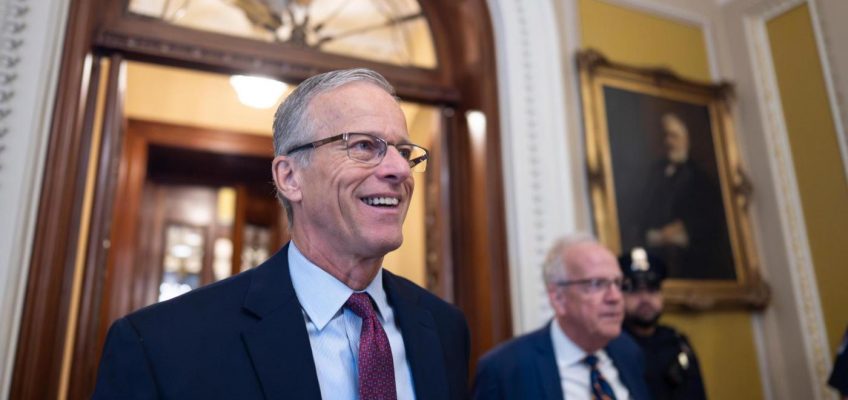“This tension illustrates the challenge of linking environmental restoration with housing policy: without careful calibration, initiatives meant to expand opportunity can unintentionally contribute to exclusion.”
The Gowanus Canal in 2023. (Michael Appleton/Mayoral Photography Office)
The Financial Times recently profiled the $2 billion remediation of Brooklyn’s Gowanus Canal under the optimistic headline: “New York’s Gowanus clean-up: can toxic ‘black mayonnaise’ become commuter gold?” The article paints a compelling picture of wildlife returning, new towers rising, and artists securing subsidized studios.
Yet beneath this hopeful framing lies a more complex story. The Gowanus cleanup is not only an environmental project; it is also an example of how large-scale restoration and urban redevelopment can reshape neighborhoods, raising important questions of affordability, equity, and resilience.
The article highlights the U.S. Environmental Protection Agency’s dredging of toxic “black mayonnaise” and construction of two 12 million gallon sewage overflow tanks. These measures are significant. But the framing suggests linear progress: contamination removed, infrastructure added, and the canal reborn.
In practice, ecological risk is ongoing. My research, which integrates geospatial analytics and IoT monitoring, shows how bulkhead gaps, tidal backflow, and storm surges continue to bring pollutants into the waterway. Hurricane Sandy in 2012, which flooded 11 billion gallons of raw sewage into New York City waterways, reminds us that dredging alone cannot guarantee long-term resilience.
Groups such as the Gowanus Canal Conservancy have played an essential role in keeping these risks visible, stewarding habitat restoration and engaging residents in ecological monitoring. Building on that work, a more equity-centered approach would include transparent metrics for Combined Sewer Overflow (CSO) reduction, participatory monitoring accessible to residents, and climate-adaptive planning calibrated to future storms rather than past averages.
Affordable for whom?
Central to the FT’s story is the promise of 8,500 new homes, with 3,000 “permanently affordable.” At face value, this seems a major win. But affordability in New York is benchmarked to Area Median Income (AMI), which reflects higher incomes across the region.
As a result, many apartments marketed as “affordable” may still be beyond reach for long-time Gowanus residents. At the same time, the median rent for a two-bedroom has risen to $6,200 a month, a 79 percent increase in just five years. This raises the concern that the very communities who lived with the canal’s environmental burdens for decades may find themselves unable to remain once the neighborhood is redeveloped.
This tension illustrates the challenge of linking environmental restoration with housing policy: without careful calibration, initiatives meant to expand opportunity can unintentionally contribute to exclusion.
South West view from the intersection of Nevins Street and Butler Street in the Gowanus neighborhood of Brooklyn on July 26, 2024 (Adi Talwar/City Limits)
Artists and cultural continuity
The FT piece emphasizes Gowanus’s creative legacy, from Keith Haring murals to the punk-era “Batcave” and highlights current commitments to subsidized artist studios through community benefits agreements. These efforts are meaningful.
At the same time, history shows that artistic communities often become early catalysts of neighborhood change. Their presence can rebrand industrial landscapes as vibrant cultural spaces, attracting investment that eventually drives up rents. In Gowanus, the promise of 100 to 140 subsidized studios, while significant, may not fully offset broader market pressures in a neighborhood where average rents already exceed those in adjacent Park Slope.
This raises the question of how cultural preservation can be sustained not only through symbolic commitments but also through broader policies that address affordability across sectors.
Whose voices define success?
The FT quotes a local resident who warns of “overdevelopment” and environmental hazards, juxtaposed against profiles of newcomers drawn to new amenities. This contrast reflects a larger issue: whose perspectives shape the definition of success?
For many long-time residents, success is measured in breathable air, resilient infrastructure, and stable housing costs. For developers and city officials, it may be counted in housing units delivered and investment attracted. For outside observers, it is often the visible transformation of a once-industrial landscape into a residential and cultural hub.
My own fieldwork in Gowanus, including conversations with housing advocates, artists, and environmental stewards, underscores that community trust is fragile. Civic trust, as the FT itself notes, is “in short supply.” Unless residents are given not only a voice but a meaningful role in shaping outcomes, redevelopment risks repeating patterns of displacement seen elsewhere in New York City.
The symbolism of Gowanus
Gowanus has always been more than a canal. Once tidal marshlands stewarded by the Lenape, later the busiest industrial canal in America, it embodies cycles of exploitation, abandonment, and reinvention. Today it stands at a crossroads: will it be remembered as a model of climate-resilient renewal that integrates equity, or as another case where sustainability goals advanced without sufficient attention to who benefits?
The FT leans toward the former, portraying a neighborhood on the rise, convenient for commuters, vibrant for families, and increasingly attractive to investors. Yet the metrics that matter most, CSO reductions, equitable housing access, cultural continuity, and climate resilience are still to be determined.
If Gowanus is to become more than real estate gold, its success should be judged not only by property values or rooftop amenities, but by whether communities most burdened by its toxic past are able to remain and thrive.
A Combined Sewer Overflow point at the Southeast corner of the Carroll Street Bridge over the Gowanus Canal, pictured here in 2020. (Adi Talwar/City Limits)
Toward equity-centered redevelopment
An alternative narrative is possible. By integrating GeoAI monitoring, participatory governance, and equity-based housing metrics, Gowanus could pioneer a more balanced model of regeneration. Rather than measuring progress solely in square footage or rents achieved, we could track:
Real-time CSO metrics accessible to residents
Displacement risk indicators tied to rent burdens
Community benefit audits to ensure promises to translate into lived equity
Climate resilience benchmarks designed for future flood scenarios
This approach does not replace ecological restoration efforts, many of which groups like the Gowanus Canal Conservancy have championed, but complements them with social and equity measures. Together, they could create a more holistic model of urban sustainability.
The FT article captures the surface transformation of Gowanus: birds, breweries, and new buildings rising from a toxic canal. But deeper questions remain: how will the benefits and burdens of redevelopment be distributed, and how will success be measured in terms of both ecology and equity?
Gowanus is not simply sludge turned gold. It is a test case for whether New York can pursue environmental sustainability without overlooking social justice. The answer will resonate far beyond Brooklyn’s 1.8-mile waterway.
Mark Yarish is a Brooklyn-based sustainability researcher completing his doctorate in sustainability at Capital Technical University. He serves on the Gowanus Canal Community Advisory Group and the Gowanus Oversight Task Force. The views expressed are his own.
The post Opinion: When ‘Black Mayonnaise’ Becomes Real Estate Gold, And The Equity Challenges of Gowanus appeared first on City Limits.




